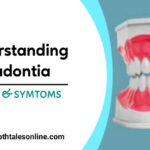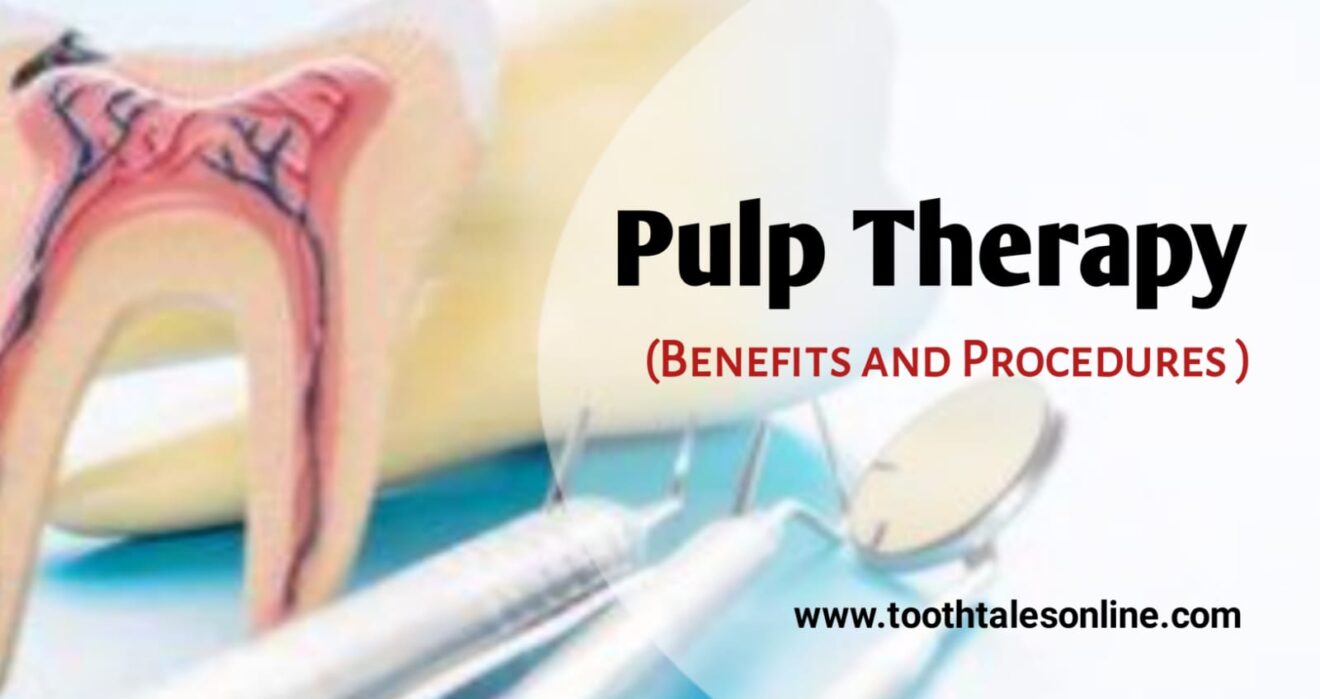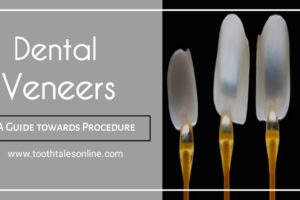Pulp Therapy: :
Pulp therapy, or endodontic therapy, is a procedure to treat the soft tissue, known as the “pulp,” inside a tooth. This guide will explain what pulp therapy involves, why it’s essential, and what you can expect during and after the procedure. We’ll also cover the benefits and offer helpful aftercare tips.
What Is Pulp Therapy?
Definition and Purpose:
Its removes, cleans, and seals the infected or damaged pulp inside a tooth. The main goal is to save the tooth and stop the spread of infection.
When Pulp Therapy is Needed?
You may need it, if you have:
- Deep cavities
- Injury that exposes the pulp
- Pulp infections or inflammation
Types of Pulp Therapy:
- Pulpotomy: Partial removal of the pulp, usually done for baby teeth.
- Pulpectomy: Complete removal of the pulp, typically for permanent teeth.
- Apexification: Helps close the root end in young teeth with open roots.
Steps in Pulp Therapy:
1.Exam and Diagnosis:
- The dentist examines the tooth, often using X-rays to assess the damage.
2.Anesthesia and Isolation:
- The dentist numbs the area with local anesthesia.
- A rubber dam is placed around the tooth to keep it clean and dry.
3.Removing and Cleaning the Pulp:
- The dentist carefully removes the infected or damaged pulp.
- The canals are then cleaned and shaped to eliminate bacteria and debris.
4.Medication and Sealing:
- The dentist applies medication to control infection.
- Finally, the canals are sealed with a special material to prevent future infections.
Benefits of Pulp Therapy:
- Keeps Natural Teeth: It saves your natural teeth, helping you chew, speak, and smile confidently.
- Stops Infection: By treating the infection early, it stops to spreading to other areas.
- Supports Jaw Development in Kids: For baby teeth, pulp therapy guides the growth of permanent teeth and aids jaw development.
- Reduces Tooth Loss: This process prevents tooth extraction, helping you keep your natural smile.
Important Considerations for Pulp Therapy:
1.Age and Tooth Growth:
- Children often need it for primary teeth.
- Apexification is used for immature permanent teeth with open roots.
2.Patient Cooperation:
- Cooperation makes it more successful.
- Clear communication with the dentist can help reduce any anxiety.
3.Post-Treatment Care:
- Good oral hygiene is essential after this process.
- Regular check-ups help ensure the treated tooth remains healthy.
4Alternative Treatments:
- In cases where a tooth cannot be saved, extraction and replacement with an artificial tooth may be needed.
Conclusion:
It is a valuable procedure for saving natural teeth and stopping infections. By understanding the process, you can feel more confident about your oral health and work closely with your dentist for the best results.
FAQs:
3.Pulp therapy is painful?
Thanks to modern anesthesia, It is generally pain-free. The dentist will numb the area, so discomfort is minimal.
4.What is the difference between pulpotomy and a pulpectomy?
A pulpotomy removes only the pulp in the crown of the tooth, usually for baby teeth. A pulpectomy removes all the pulp from both the crown and roots, commonly done for adult teeth.
5.How long does pulp therapy take?
The time depends on the procedure’s complexity. It usually takes 30 to 90 minutes, though some cases may require more than one visit.
6.Can children have pulp therapy?
Yes, It is common for primary teeth in children. It helps maintain tooth structure, supports jaw growth, and guides the proper eruption of permanent teeth.
7.What should I expect after pulp therapy?
You may feel slight tenderness or sensitivity. Practicing good oral hygiene and attending follow-up visits will help monitor recovery and ensure the therapy’s success.
8.Are there any risks with pulp therapy?
While generally safe, risks include infection, reinfection, or incomplete healing. Following the dentist’s aftercare instructions minimizes these risks.
9.Can pulp therapy prevent tooth extraction?
Yes, one of the main goals of the process is to save the natural tooth, preventing extraction and preserving your natural smile.






















Add Comment